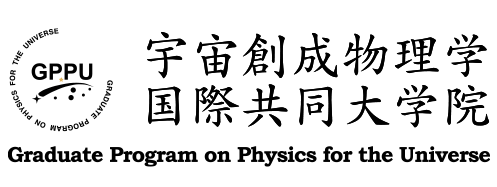GPPU Seminar
Understanding the generation of hadron masses from QCD and experimental data
Philipp Gubler
(JAEA)
Date
15:00-17:00, May 09th, 2023Place
(hybrid) Room 743, Science Complex B (H-03), Zoom registration mapAbstract
It has long been assumed that a large part of the mass of hadrons is generated by the spontaneous breaking of chiral symmetry of the strong interaction, which is successfully described by Quantum Chromodynamics (QCD). A clear confirmation of this mechanism from experimental measurements has, however, been elusive, in part due to the difficulty in measuring the order parameter of chiral symmetry, e.g. the chiral condensate. One method for potentially clarifying the relation between chiral symmetry and the hadron masses, is to probe the behavior of hadrons in nuclear matter, where chiral symmetry is believed to be partially restored. For this to work, one needs both a good theoretical understanding of the behavior of hadrons in matter and, equally important, how such a behavior will be reflected in experimental observables. In this lecture, I will first review the basic concepts needed to understand the relation between hadron masses and chiral symmetry of the strong interaction. I will then give an elementary introduction to the method of QCD sum rules, which has been an important theoretical tool in this field and will provide an overview of its use in current research. Next, I will review the various past and current experiments that have tried to study hadrons in dense matter and introduce methods on how the corresponding experimental data are analyzed, focusing particularly on the use of numerical transport simulations.
Point
GSP 1Contact: Yusuke Tanimura (tanimura [at] nucl.phys.tohoku.ac.jp)
